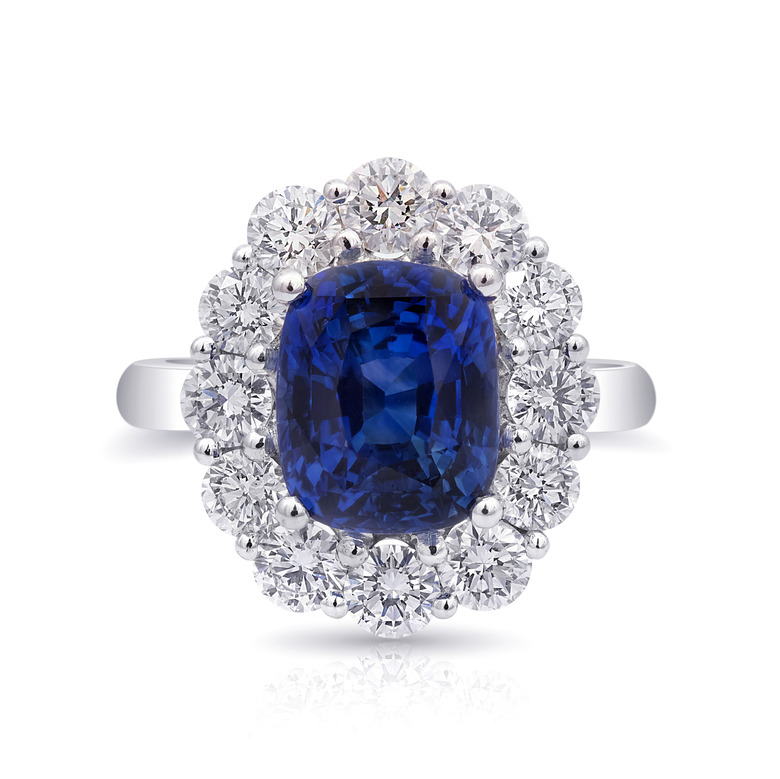Can Scratches Be Polished Out Of A Sapphire Crystal?
Sapphires are the crystalized form of the mineral corundum. These crystals are second in hardness only to diamonds, registering 9 on Mohs scale of hardness. What the hardness means is that sapphires can be scratched only by a diamond and, sometimes, other sapphires depending on variances in each crystals hardness. There are things you should know about finding scratches in your sapphire crystals, and a few things you can do to fix them.
Scratching Sapphire
Scratching Sapphire
Unless your crystal has been kept where it may come into contact with a diamond or other sapphires, your stone will not become scratched. You may find scratches in faceted stones that were not visible before because the stone was flawed, filled or coated by the jeweler to hide the flaw and the filler has worn out of the crack. These kinds of flaws can undermine the strength and quality of your crystal. You should inspect sapphires very carefully with a jeweler's glass for signs of filling before you purchase the stone. If your stone does actually scratch when it has not rubbed against diamond or other sapphire, the crystal is not a genuine sapphire.
Removing Scratches by Hand
Removing Scratches by Hand
If a scratch is light and shallow it can be removed using an extremely fine grade diamond powder and a dremel or similar grinding tool and polishing bits. You will want the diamond powder to be 100,000 to 200,000 (1/4 to 1/8 micron) grit. Moisten the grit with a drop of olive oil, using just enough to make a paste. Apply the paste to the facet of the sapphire on the scratch and lightly buff the entire facet. Do not buff for too long or you can ruin the symmetry of the facet. Rinse the stone thoroughly to remove all traces of the powder.
Removal with Lapidary Equipment
Removal with Lapidary Equipment
If the scratch is deep, you may have to re-facet all of the facets to keep them symmetrical. If this is the case and you are not an expert at faceting gemstones, it is best to take the stone to a professional jeweler to have it repaired. While the polishing process is much the same as using a hand tool for polishing, it is much easier to break the stone, especially if the scratch is deep enough to require some friction to grind it enough to remove the scratch. The stone will be slightly smaller after grinding all facets to restore the original light refraction and make it glisten again.
Sealers
Sealers
If the scratch is deep enough to warrant re-faceting, you may want to use a jewelers sealer to hide the scratch instead of trying to polish it out of the stone. You need to know the refractive index of your stone to be able to match fillers with your stone. If you do not match the stone and filler correctly, you will be able to see the flaw because of the way the light will act when it hits your stone. A professional stone cutter or jeweler can help you match a filler to your stone. If you opt to just hide the scratch temporarily you can do so using cedar oil, but you will need to reapply it periodically.
Cite This Article
MLA
Taylor, Sally. "Can Scratches Be Polished Out Of A Sapphire Crystal?" sciencing.com, https://www.sciencing.com/can-scratches-polished-out-sapphire-crystal-12105512/. 13 March 2018.
APA
Taylor, Sally. (2018, March 13). Can Scratches Be Polished Out Of A Sapphire Crystal?. sciencing.com. Retrieved from https://www.sciencing.com/can-scratches-polished-out-sapphire-crystal-12105512/
Chicago
Taylor, Sally. Can Scratches Be Polished Out Of A Sapphire Crystal? last modified March 24, 2022. https://www.sciencing.com/can-scratches-polished-out-sapphire-crystal-12105512/
